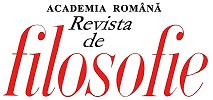Estetica țapului ispășitor. 'El Akelarre' de Goya între sabatul vrăjitoarelor și mania baccantelor
The Aesthetics of the Scapegoat. 'El Akelarre' by Goya between the Witches’ Sabbath and the Bacchae’s Mania
Author(s): Maria Amarinei, Ștefan BârzuSubject(s): Aesthetics
Published by: Editura Academiei Române
Keywords: Goya; El Akelarre; witchcraft; bacchae; scapegoat; bacchomania; demonology;
Summary/Abstract: Starting from the aesthetical grounds of Francisco Goya’s 1798 'El Akelarre' (known as the 'Sabbath of the Witches') this article attempts an eclectic exploration of primarily two hermeneutical horizons: the archaic Greek horizon and the late XVIIIth century Christian horizon. The point of convergence between these two is the marginal, occult feminine, the magical and demonologically-charged region of collective human experience. These marginalized groups of women are defined and redefined through their more or less hidden devastating force and also by their unnatural access to the demonic dark corners of human experience. In this sense, we have concomitantly worked in three directions. First, through the analysis of 'El Akelarre' we established the existence of a common collective representation of two marginalized groups embodied by the bacchae of the Greek archaic times and the witches of the Christian modernity. At a second level, we mapped out the possible origins and the role of this historical and religious juxtaposition of female witchcraft. At the third and last level we tried to re-establish Goya’s work in its historical context, a space in which a case could be made for a phenomenon that runs through most of western European culture – bacchomania.
Journal: Revista de filosofie
- Issue Year: LXIX/2022
- Issue No: 6
- Page Range: 787-803
- Page Count: 17
- Language: Romanian

